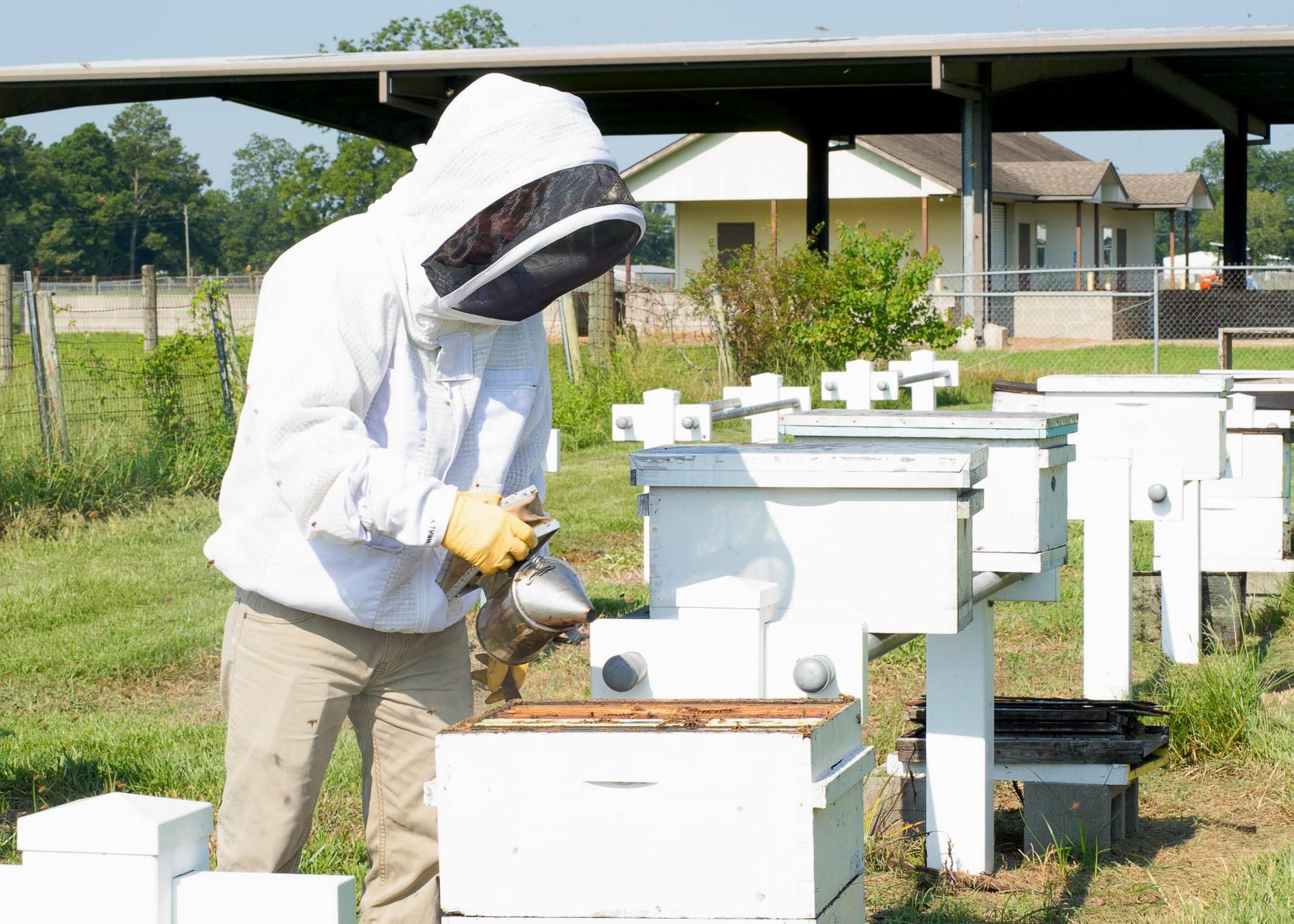
The Chef John Folse Culinary Institute to rename student lounge in honor of Morgan City Restaurateurs
June 1, 2021
What’s buzzing? Working with mosquito control to protect honey bees
June 1, 2021By Heather Kirk-Ballard, LSU AgCenter Horticulturist
Cacti and succulents have become the trendy houseplant for urban gardeners and new growers in smaller living spaces looking to add more plants to their homes. These popular plants are an excellent addition to any space.
Succulents are plants that can store water in their leaves and stems, allowing them to survive in very dry places — think deserts. Cacti are a type of succulent. Succulents conserve water in their thick, fleshy leaves, which come in unique shapes and forms.
There are thousands of types of succulents and cacti. Many grow well indoors because they are slow-growing, low-maintenance plants.
In general, succulents need about four to six hours of bright light. Depending on the plant, they may prefer higher light intensities. Some may take direct light all day, while other tropical plants require indirect light. Know the requirements of your plant. These days, that information is at your fingertips. Pro tip: Rotate indoor succulents frequently to keep them uniform.
Another reason succulents and cacti make good indoor plants is that they can tolerate low humidity. Providing adequate humidity for houseplants becomes especially difficult in the winter with the use of heaters. Luckily, succulents will perform all the same.
Good drainage is key to successfully growing succulents. Use porous containers such as terra cotta, clay and concrete pots. These materials are ideal because they allow excess water to drain. Make sure planters have drainage holes.
Most succulent and cacti soils are coarser and typically contain sand and perlite to help improve drainage. Tropical cacti such as Christmas and Easter cactus will need more moisture retention, and soils for these plants typically have more peat.
Make your own succulent potting soil by mixing one part potting soil and one part coarse sand. A good test is to moisten the soil and squeeze some in your hands; the soil should fall apart easily.
The No. 1 problem with cacti and succulents is overwatering. That is the same issue for almost all houseplants. Because plants are not exposed to scorching sun and high temperatures, they require less water.
Overwatering can cause roots to rot, preventing them from taking up water and giving them the appearance that they are underwatered. Most houseplants do well with once-a-week watering. Cacti and succulents can go for more than a week. Allow the soil to dry out completely between waterings. During the low-light winter months, reduce even more.
Remember, these plants thrive in arid climates. Try to mimic those conditions.
Signs of overwatering are wilting and mushy, smelly plant stems and roots. If you find this is your situation, you may be able to right the wrong by replanting and reducing the amount you water.
Succulents and cacti have low fertilizer requirements. Fertilize once or twice a year in the late spring or summer when they are actively growing.
Pests are rarely a concern for succulents, but mealybugs and scale can be a problem. You can use an insecticidal soap or wipe them off.
Succulents and cacti are extremely easy to propagate (making new plants from a cutting or offsets). You can take a stem cutting or use broken-off leaves. Most succulents and cacti produce pups that can be easily rooted to start new plants.
Simply break off a leaf and let it scar over or dry slightly for a couple of days. You can lay the cutting directly on top of the soil. No need to stick it into the soil. Most of these pups produce roots at the callus and will develop roots outside of the soil and work their way down into the pot.
It will take some time for roots and rosettes to form from the cutting, so be patient. Once you see new growth of roots, you can then plant gently into a new container.
Look for some of these great options in garden centers, nurseries and floral sections of local groceries. Here is a great list of commonly available succulents and cacti: aloe vera (Aloe barbadensis), beehive cactus (Escobaria vivipara), blue hens and chicks (Echeveria secunda var. glauca), bunny ears cactus (Opuntia microdasys ‘Albata’), burro’s tail (Sedum morganianum), desert candle (Euphorbia acrurensis), echeveria purpusorum (Echeveria purpusorum), fishbone cactus (Epiphyllum anguliger), green escheveria (Echeveria affinis), hen and chicks (Sempervivum ‘Passionata’), horn tree (Crassula ovata ‘Gollum’), moonstones (Pachyphytum bracteosum), money tree (Crassula ovata), night-flowering cactus (Cereus florida), paddle plant (Kalanchoe thyrsuflora), panda plant (Kalanchoe tomentosa), string of buttons (Crassula perforate ‘Variegata’), string of hearts (Ceropegia woodii), string of pearls (Senecio rowleyanus), Pearl of Nurnberg (Echeveria ‘Perle Von Nurnberg’), tree cactus (Pilosocereus azureus) and zebra cactus (Haworthia attenuate).










